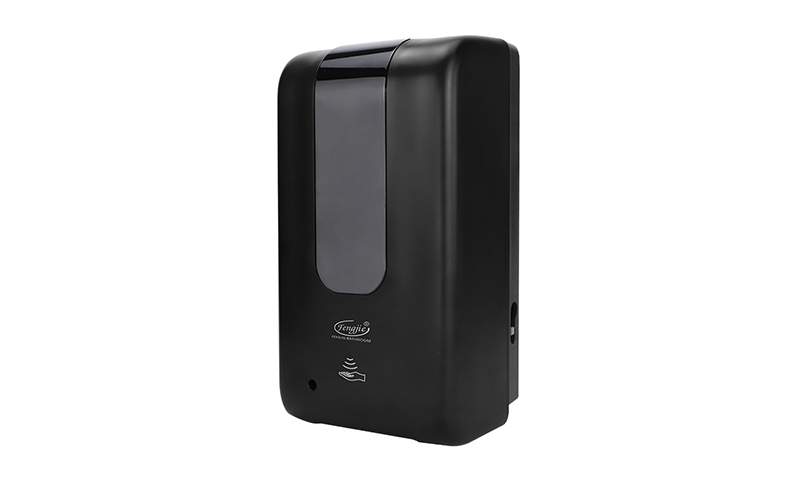The kitchen is a room that requires impeccable hygiene. Electric hand sanitizer dispenser helps prevent the proliferation of microbes, viruses and bacteria that love this very welcoming place! To clean and disinfect the kitchen, the use of bleach is still very common, although it is a potentially dangerous product.
We explain to you why it is not a recommended disinfectant for the kitchen and we also give you alternatives to disinfect your interior without taking any risk.
Why avoid using bleach to sanitize your kitchen?
Mixture of caustic soda and chlorine, bleach is a particularly corrosive and toxic acid that should be common with great care. It is a powerful disinfectant, deodorant and whitener, but without any detergent action. It must be applied to previously cleaned surfaces and must always be rinsed.
Fortunately, it is quite possible to clean and disinfect your kitchen with other less harmful products and just as effective.
One of the major risks when using bleach is making dangerous mixtures. It should never be mixed with household vinegar for example. This is because it causes a reaction and vapors that are harmful to health. Bleach is particularly not recommended as a disinfectant for the kitchen. It is important to avoid using it on surfaces instead electric hand sanitizer dispenser is good to use.

Tips for safely disinfecting the kitchen
The kitchen is where you handle, prepare, store and preserve food. Between the splashes of grease, dirty dishes, humidity or even the remains of food, it is a perfect place for the development of bacteria. This is why it is essential to carry out a regular disinfection of the various surfaces, in order to avoid the multiplication of microbes which can be responsible for food poisoning.
Is it possible to disinfect your kitchen with natural solutions?
Natural recipes based on black soap, baking soda, white vinegar or even Marseille soap, are useful for cleaning your kitchen but not for disinfecting it. They will indeed remove dirt, but will not destroy germs and bacteria in depth to disinfect use electric hand sanitizer dispenser. For effective cleaning and disinfection, it is essential to turn to products that will have a double action.
Disinfect key areas of the kitchen without risk
Even if the entire kitchen must benefit from impeccable hygiene, some areas are more likely to see bacteria develop at high speed. To keep a clean, healthy atmosphere and to disinfect safely, we offer you various products:
The sink is a constantly humid area in which leftover food can remain and cause bacteria to multiply. Once again, you can count on electric hand sanitizer dispenser.
The work surface, in direct contact with food, must be disinfected daily to prevent the spread of germs using electric hand sanitizer dispenser. For this you can use the disinfectant disinfectant kitchen protection, which disinfects and deeply cleans grease and encrusted residues. Household appliances, the dishwasher and also the coffee machine must be disinfected regularly.
What is the use of electric hand sanitizer dispenser?
For this type of device, use the electric hand sanitizer dispenser multi-purpose protective disinfectant or all-in-1 dishwasher tablets which washes and disinfects even at low temperatures. The hood, the oven rack and the hobs are also home to an impressive number of microbes!
To get rid of it and degrease it thoroughly, spray electric hand sanitizer dispenser disinfectant kitchen protection degreaser, leave to act for a few minutes and wipe with a clean, damp sponge.
When and how to disinfect your refrigerator?
Ideally, it is advisable to clean your refrigerator twice a month using electric hand sanitizer dispenser. Store the food in a cooler while cleaning and proceed from top to bottom: Clean the shelves, walls, drawers and the vegetable drawer with a sponge with a disinfectant without aggressive residues before rinsing with hot water and drying with a cloth.
5 good reflexes for a healthy environment
On a daily basis, adopt these good reflexes to limit the proliferation of bacteria in your fridge and preserve your food.
1. Remove the packaging
Cardboard or plastic packaging’s in which certain products such as yoghurts and drinks are packaged are common for their transport. It is therefore preferable that they do not fit in your fridge. Put them directly for recycling.
2. Cover, close
The cold does not protect bacteria, so it is essential to cover the food you keep in your fridge properly. Use food wrap and wraps, universal lids or reusable glass jars and use electric hand sanitizer dispenser where necessary.
3. Throw
Check the condition of your opened products as well as your fruits and vegetables. If they show signs of mold or start to rot, take them out of your fridge and throw them in the trash.
4. Monitor operation and temperatures
Make sure your fridge is working properly. Power cuts, a broken thermostat or any other problem can create a temperature that is conducive to bacteria growth.

5. Defrost
Defrost your refrigerator as soon as a layer of ice begins to cover the wall. In addition to disrupting the temperatures, this causes your device to overheat, which increases your electricity consumption. On forced-air refrigerators, the accidental accumulation of ice on the freezer side can even block the propulsion of the cold to the refrigerator compartment.
Where to use electric hand sanitizer dispenser?
According to a study carried out by the University of Barcelona, the areas where we find the most germs are:
1. The toilets come in first position, because it is the place most loaded with bacteria and microbes in the house.
2. Sponges can concentrate as many germs as toilets and are sanitized properly in only 20% of homes. They can redeposit germs on already clean surfaces.
3. The sink can hold 100,000 times more germs than the toilet sink and is in constant contact with food.
4. In the bathtubs a film called "bioflim" may appear, formed from the accumulation of different bacteria and which can cause infections.




